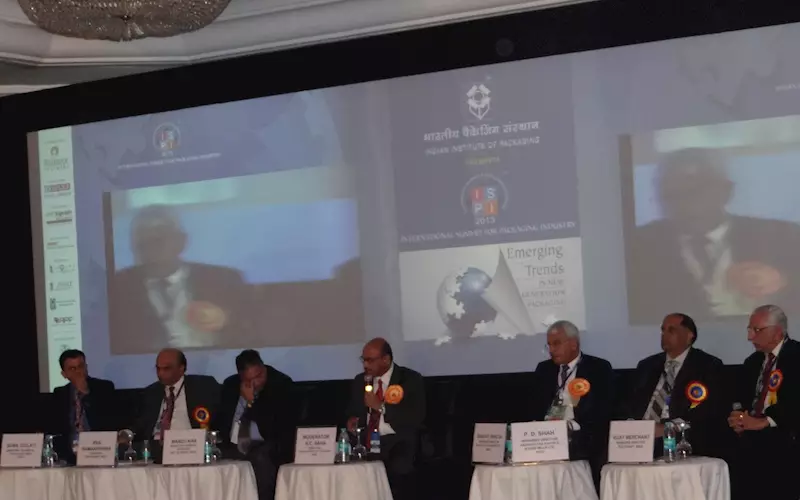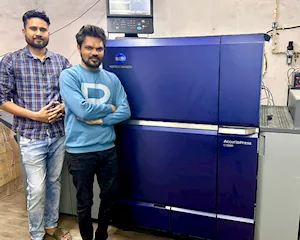Indiapack 2013: Packaging - Emerging trends and challenges ahead
When it comes to selection of packaging materials, some materials are favoured over the others depending on their characteristics, market viability, and economics and more recently on sustainability and carbon footprint. As a result of technological developments coupled with changing consumer habits some drastic changes in consumption pattern of different packaging materials is observed in the industry globally. The typical applications of glass and metal packaging have been replaced with paperb
05 Feb 2013 | By Priya Raju & Rushikesh Aravkar
The packaging basket that represents itself in today’s mix of paperboard, plastics, metals and glass includes has observed a vigorous shuffle over last few decades. “We are here to promote all types of packaging materials,” says Prof N C Saha, director, Indian Institute of Packaging, during a panel discussion at the recently concluded third edition of International Summit of Packaging Industry.
The dynamic panel discussion moderated by Saha discussed various facets of packaging materials, machinery and changing consumer behaviour. The panel comprised of Sanjay Bhatia, managing director, Hindustan Tin Works, PD Shah, Saurashtra Paper & Board Mills, RVS Ramakrishna, chairman, ITW, Manoj Kaul of AGI Glaspac, Sunil Gulati, general manager-technical services, Coca-cola.
In terms of India’s standing on high barrier plastic materials at international platform, the panel discussed how Indian manufacturer Uflex, which has established its footprint in western countries, produces high barrier plastics. All the panelists agreed that India is at par with the global scenario when it comes to high barrier plastics, India has capability and efficiency to produce high barrier plastics it is just a matter of demand and supply.
Gulati highlighted modern marketing scenario where the expected shelf life is decreasing. He said, “Longer the product on the shelf, it is more likely that it is regarded as old and less acceptable in the market. In today’s marketing plan, 75% freshness is the need meaning, if the shelf life of the product is 100 days, it must be on the shelf within 25 days of manufacturing.”
“The paper manufacturers must try to incorporate value additions to their products in a larger way,” says Shah. Discarding the general perception that paper contributes to environmental deterioration, Shah adds that paper is the only packaging material that has infinite renewable resource and it is recyclable.
Shah highlighted the challenges faced by paper industry. “Indian paper industry has to depend on imported fibre due to lack of fibre sources in the country. Also, paper inherently lacks barrier properties and is susceptible to moisture. However, we need to focus on technologies to improve quality, printability and incorporate barrier properties to add value to paper as a packaging material,” adds Shah
Bhatia is of the opinion that metal is the most sustainable packaging material. “Metal remains metal throughout its lifecycle,” he says. Bhatia cited the global initiative of Canvironment Week taken by can-makers and brand owners, which aims at generating awareness about the benefits of usage of cans.
Gulati feels that every package has its own benefits but using glass bottles for beverages is economically viable as one bottle is reused for about 12-15 times.
Glass being the inert most packaging material is always a favourite choice unless its weight and fragile nature hampers its selection. The market share of glass is 11% of the total packaging market. Speaking about the new technologies to overcome these drawbacks of glass, Kaul says, “Bringing in new technologies to lighten the weight of glass and to strengthen it against fragility has been the focus of Indian glass manufacturers in recent times. The implementation of narrow-neck press and blow technology for manufacturing super lightweight glass bottles is in process.”
With super lightweight bottles being introduced in the market, Kaul sees the trend of using non-returnable glass bottles for beverages coming in. “Single trip light weight products will increase. The need is driven by consumer demand and our efforts are in place.”
“Sustainability is an ongoing process. It is not just resource conservation or down gauging or using eco-friendly materials, it is a mix of all these together. To achieve sustainability, interaction between stake holders is necessary,” says Mehra.
The discussion on sustainability ended with all the panellist agreeing that innovations in packaging should be aimed at sustainability and to this effect unified efforts must come from converters, machinery manufacturers and brand owners.
The panel also discussed the limitation of Indian packaging machinery industry. Ramakrishna says, “The packaging equipment manufacturing in India has not evolved as of today but as we reach the global scale in terms of volume, the evolution will take place.” The panellists agreed to the fact that automation is necessary for Indian industry to be more efficient. “Besides automation, the machinery needs to be flexible enough to deliver flexible outputs and serve the consumer in a better way,” observes Gulati.
In his concluding comments, the moderator Saha says that the technological developments in the areas of machinery as well as materials will take place and help us make a move towards sustainability. We promote all the packaging materials and ‘all is well’.














 See All
See All